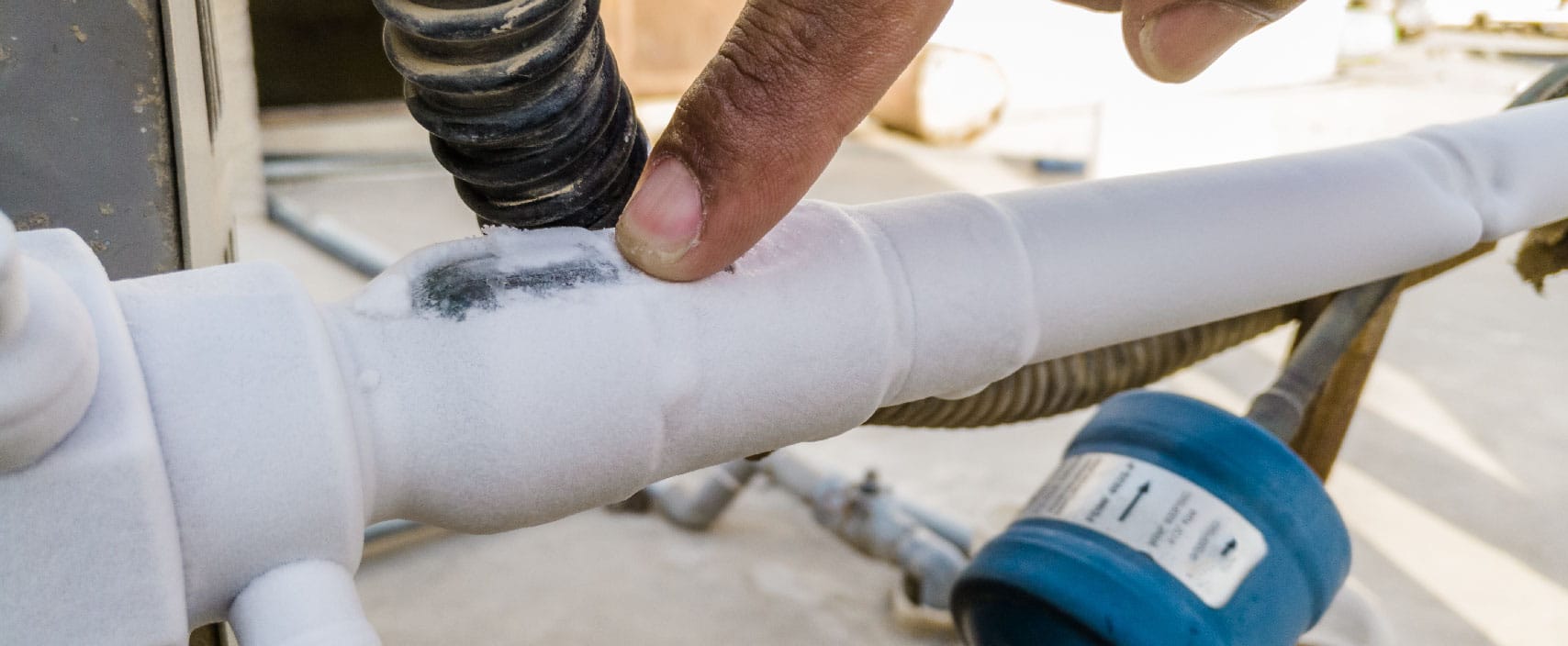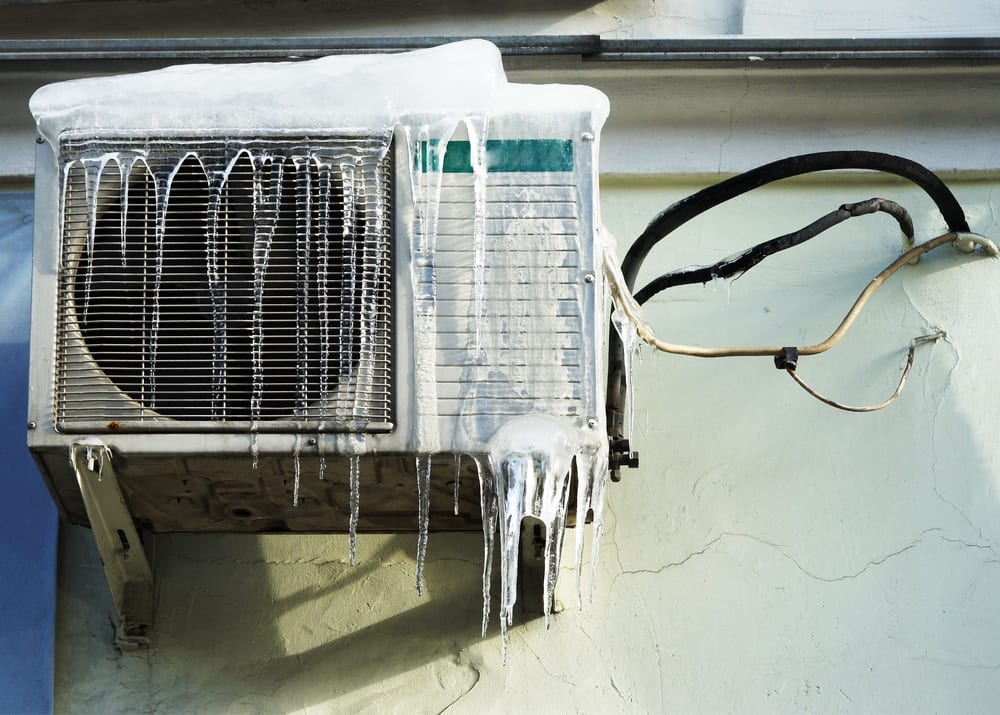My AC Pipe Is Frozen Solid - What Should I Do? Steps for Resolution
My AC Pipe Is Frozen Solid - What Should I Do? Steps for Resolution
Blog Article
Were you in search of information and facts What Causes AC Pipes To Freeze??

Introduction
Finding that your air conditioning pipe is frozen can be concerning, specifically during hot summertime when you rely on your air conditioning unit the most. Recognizing what to do in such a scenario is crucial to avoid more damage to your cooling system and ensure your convenience inside.
Recognizing the Causes
Numerous aspects can contribute to the cold of an air conditioning pipe. Comprehending these reasons can aid you attend to the concern successfully.
Lack of Airflow
One usual source of a frozen air conditioner pipe is inadequate airflow. When the air flow over the evaporator coil is restricted, it can trigger the coil to go down below freezing temperature level, bring about ice development on the pipe.
Reduced Refrigerant Levels
Insufficient refrigerant levels in your air conditioning system can additionally lead to an icy pipeline. Low cooling agent levels can create the stress in the system to drop, resulting in the cold of dampness on the evaporator coil.
Winter Conditions
In colder climates, freezing temperature levels outside can contribute to the freezing of air conditioning pipes. If your AC device is not properly protected or if there are leaks in the ductwork, cool air can infiltrate the system, creating the pipeline to freeze.
Dirty Air Filters
Dirty or clogged air filters can restrict air movement in your air conditioner system, resulting in various issues, consisting of an icy pipe. It's essential to replace or cleanse your air filters consistently to make certain appropriate airflow and protect against ice accumulation.
Indicators of a Frozen Air Conditioner Pipe
Acknowledging the signs of an icy air conditioner pipe is essential for prompt action.
Lowered Airflow
If you discover a significant reduction in airflow from your vents, it could suggest an icy pipeline.
Ice Buildup on the Pipe
Visible ice accumulation on the cooling agent line or the evaporator coil is a clear sign of an icy a/c pipeline.
Unusual Sounds from the Unit
Unusual audios, such as hissing or gurgling, originating from your a/c unit can signal that there's ice present on the pipeline.
Immediate Actions to Take
When confronted with a frozen AC pipeline, it's vital to act quickly to stop further damages to your cooling system.
Turning off the air conditioning
The initial step is to turn off your a/c unit to avoid the system from running and intensifying the problem.
Looking for Blockages
Examine the location around the interior device for any kind of obstructions that might be obstructing airflow, such as furniture or curtains.
Defrosting the Pipe
You can utilize gentle techniques like putting towels taken in cozy water around the icy pipe to assist thaw it slowly.
Preventive Measures
Taking safety nets can assist stay clear of future occurrences of an icy a/c pipe.
When DIY Methods Fail
If your efforts to thaw the pipe or address various other problems are not successful, it's time to call a professional.
Relevance of Hiring a Professional HVAC Technician
A qualified HVAC specialist has the experience and tools required to detect and repair concerns with your air conditioning system securely and properly.
Regular Maintenance Checks
Arrange routine maintenance contact a professional HVAC professional to ensure that your AC system is running effectively.
Transforming Air Filters
Frequently change or clean your air filters to prevent airflow restrictions and keep ideal performance.
Insulating Exposed Pipes
If your air conditioner pipelines are subjected to cold temperatures, consider shielding them to avoid freezing throughout winter months.
Looking For Professional Help
If DIY methods stop working to deal with the concern or if you're unclear about exactly how to proceed, it's best to look for aid from a qualified HVAC specialist.
Conclusion
Taking care of an icy air conditioning pipeline can be an irritating experience, yet recognizing just how to react can assist minimize damage and restore convenience to your home. By understanding the reasons, recognizing the indications, and taking punctual action, you can properly deal with the problem and protect against future incidents.
What to Do If Your AC Line Is Frozen
Make Sure All Supply and Return Air Vents Are Open
If you notice problems with airflow, the first thing you should do is check your supply and return vents. Supply vents distribute clean, conditioned air throughout your home. As this air becomes stale, it’s pulled into the return vent, where it’s reconditioned before being sent back out through the supply vent.
When these vents are closed, air won’t flow in the home. Before examining your AC, check the vents in every room and ensure they’re all open.
Check for a Dirty Air Filter
Another possible cause of limited airflow is a dirty air filter. Your air conditioner’s filters catch elements you don’t want to breathe in, such as dirt and dust. Over time, filters can become clogged, ultimately blocking air from flowing in and out. The lack of airflow can then cause the entire coil to freeze and will completely restrict any air from moving through it. The AC may need to be powered off for one to two days to allow the coil to thaw after replacing the filter to allow proper functioning of the unit. This debris can also accumulate on your AC’s evaporator coil, requiring a more serious repair. In general, air filters should be cleaned regularly (about every two weeks).
Assess Your Outdoor Unit
In addition to checking your AC, assessing the outdoor unit is a good idea. Also known as the condensing unit, it works with your interior unit to release heat outside. An issue with the outdoor unit can result in rising internal temperatures.
Overgrown Shrubs or Clogged Leaves
From leaves and twigs to shrubs and debris, there’s no shortage of outdoor elements that can accumulate around your condensing unit. When these elements get lodged inside the unit, they can block airflow. Fortunately, removing the blockage can solve the problem.
Sounds of a Broken Fan
Shrubs and leaves aren’t the only things that can impede your outdoor unit’s airflow. If the fan is broken, the unit won’t be able to properly get rid of heat — which means the internal temperature won’t go down. First, make sure the fan is spinning. If it is, check for the following sounds of a broken fan:
Buzzing Rattling Screeching Hissing Clicking Preventative Measures
Nobody wants to deal with a frozen AC line. In addition to causing problems with your air conditioner, they require professional repairs. On the bright side, there are preventative measures you can take to help ensure this issue doesn’t arise in the first place.
https://www.coopergreenteam.com/blog/what-to-do-if-ac-line-frozen

Hopefully you enjoyed reading our piece on Air Conditioner Frozen? How To Fix your Frozen AC Line. Many thanks for taking the time to read our article. Do you know somebody else who is intrigued by the niche? Be sure share it. Bless you for your time. Don't forget to come by our blog back soon.
Show Details Report this page